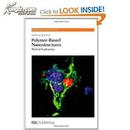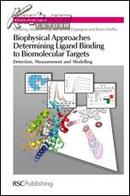
Polymer-based Nanostructures: Medical Applications (RSC Nanoscience & Nanotechnology) [Hardcover]
¥ 350 2.3折 ¥ 1520 九品
仅1件
作者Pavel Broz
出版社RSC
ISBN9780854049561
出版时间2010-02
装帧精装
页数388页
定价1520元
货号2013/05
上书时间2013-05-26
- 在售商品 暂无
- 平均发货时间 13小时
- 好评率 暂无
- 店主推荐
- 最新上架
商品详情
- 品相描述:九品
- 商品描述
-
Polymer-based Nanostructures: Medical Applications (RSC Nanoscience & Nanotechnology) [Hardcover]
Pavel Broz
Pavel Broz (Editor)
› Visit Amazon\'s Pavel Broz Page
Find all the books, read about the author, and more.
See search results for this author
Are you an author? Learn about Author Central
(Editor), Harry Kroto (Series Editor), Paul O\'Brien (Series Editor), Harold Craighead (Series Editor), Violeta Malinova (Contributor), Wolfgang Meier (Contributor), Emmanuel Akala (Contributor), Seyed Moghimi (Contributor), Jaspreet Vasir (Contributor), Chiranjeevi Peetla (Contributor), Vinod Labhasetwar (Contributor), Lucy Kind (Contributor), Mariusz Grzelakowski (Contributor), Ed Uzgiris (Contributor), Margaret Wheatley (Contributor), Vladimir Torchilin (Contributor), Omid Farokhzad (Contributor), Shenshen Cai (Contributor), David A Christian (Contributor), Manu Tewari (Contributor), Tamara Minko (Contributor), Dennis E Discher (Contributor), An Ranquin (Contributor), Caroline De Vocht (Contributor), Patrick Van Gelder (Contributor), Yong-Eun Lee Koo (Contributor), Daniel A Orringer (Contributor), Raoul Kopelman (Contributor)
Book Description
Publication Date: February 10, 2010 | ISBN-10: 0854049568 | ISBN-13: 978-0854049561 | Edition: 1st Edition.
Nanotechnology is about small things and medicine usually deals with bigger things - with patients and their diseases. The ultimate goal of all medical sciences is the healing of diseases whenever possible, otherwise the abatement of suffering. The first step of a successful medical treatment is the correct diagnosis of the disease or disease condition, based on clinical knowledge and experience and on diagnostic tools that give insight into macroscopic, microscopic, and biochemical properties of the disease process. Nanomaterials can improve currently available diagnostic applications in medicine and especially polymer-based nanostructures have an enormous potential to revolutionize the way how clinicians diagnose diseases correctly and efficiently. The second step when treating patients is a powerful and specific therapy that is low in side effects, that can prolong the survival of the patient or that can lower the burden of the disease. Again, polymer-based nanostructures are very promising novel tools that might change the way how certain diseases are being treated. This book combines both viewpoints and presents successful applications of nanotechnological constructs in medicine and the science behind the tools. Supramolecular nanometre-sized structures such as nanoparticles or vesicles built out of new synthetic polymeric materials have aroused enormous interest in recent years - both in chemical and pharmaceutical labs as well as in clinical medicine. They promise to be useful for novel or improved diagnostic and therapeutic applications for important diseases such as arteriosclerosis, cancer, infections, or autoimmune disorders. In the first part of this book, renowned researchers provide a detailed insight into both chemical and biological/pharmacological basics that have to be managed for successful applications of these nanostructures in human beings. In the second part, invited authors review the main literature in both diagnostic and therapeutic applications with polymer-based nanostructures that have already reached clinical practice or will enter it in the next few years. Key features include: -Multidisciplinary: The book is written by both clinicians from world-wide leading University Hospitals as well as researchers coming from natural sciences. Special effort was invested into comprehensibility across the traditional borders of medicine, pharmacology, and chemistry. -State-of-the-art: The book is filled with exciting contributions from some of the leading research groups in the field. This guarantees a clear emphasis on ongoing research and ground-breaking applications and projects -Structure: The book can be read from the beginning to the end, starting with basics that help to understand the current diagnostic and therapeutic applications of polymer-based nanostructures in medicine, ending with innovative multifunctional and \"smart\" nanostructures that might be the future of medicine. The way leads from solid foundations to nowadays applications and further to more futuristic approaches -References: The internationally renowned authors of the chapters have put great efforts into choosing only the most important and competitive papers for the reference lists. All major projects in this field are included - perfect for students or researchers that want to search the main literature thus avoiding the need to search through huge electronic databasesShow more
Show less
--------------------------------------------------------------------------------
Editorial Reviews
Book Description
This book offers a truly interdisciplinary perspective on polymer-based nanometre-sized macrostructures and their use in biology and medicine, with a special concentration on diagnostic and therapeutic applications. A summary of the necessary steps leading to the development and application of a complex-based nanostructure is provided as well as reviews of the main literature in areas covered. The content of the book has high clinical and practical significance and offers a broad overview of this rapidly growing field. The interdisciplinary nature of this title will make it of interest to polymer chemists, pharmacologists, biologists and clinicians alike.
From the Back Cover
Nanotechnology is about small things and medicine usually deals with bigger things - with patients and their diseases. This book combines both viewpoints and presents successful applications of nanotechnological constructs in medicine and the science behind the tools. Supramolecular nanometre-sized structures such as nanoparticles or vesicles built out of new synthetic polymeric materials have aroused enormous interest in recent years - both in chemical and pharmaceutical labs as well as in clinical medicine. They promise to be useful for novel or improved diagnostic and therapeutic applications for important diseases such as arteriosclerosis, cancer, infections, or autoimmune disorders. In the first part of this book, renowned researchers provide a detailed insight into both chemical and biological/pharmacological basics that have to be managed for successful applications of these nanostructures in human beings. In the second part, invited authors review the main literature in both diagnostic and therapeutic applications with polymer-based nanostructures that have already reached clinical practice or will enter it in the next few years. Key features include: -Multidisciplinary: The book is written by both clinicians from world-wide leading University Hospitals as well as researchers coming from natural sciences. Special effort was invested into comprehensibility across the traditional borders of medicine, pharmacology, and chemistry. -State-of-the-art: The book is filled with exciting contributions from some of the leading research groups in the field. This guarantees a clear emphasis on ongoing research and ground-breaking applications and projects -Structure: The book can be read from the beginning to the end, starting with basics that help to understand the current diagnostic and therapeutic applications of polymer-based nanostructures in medicine, ending with innovative multifunctional and \"smart\" nanostructures that might be the future of medicine. The way leads from solid foundations to nowadays applications and further to more futuristic approaches -References: The internationally renowned authors of the chapters have put great efforts into choosing only the most important and competitive papers for the reference lists. All major projects in this field are included - perfect for students or researchers that want to search the main literature thus avoiding the need to search through huge electronic databases
Hardcover: 388 pages
Publisher: Royal Society of Chemistry; 1st Edition. edition (February 10, 2010)
Language: English
ISBN-10: 0854049568
ISBN-13: 978-0854049561
Product Dimensions: 6.1 x 1 x 9.2 inches
相关推荐
-

Polymer-Based Multifunctional Nanocomposites and Their Applications
九品济宁
¥ 86.00
-

Polymer-Based Multifunctional Nanocomposites and Their Applications
九品廊坊
¥ 99.00
-

FRICTION AND WEAR IN POLYMER-BASED MATERIALS 16961
八五品北京
¥ 331.00
-

FRICTION AND WEAR IN POLYMER-BASED MATERIALS7491
八五品北京
¥ 88.00
-

Nanomedicine-study on multifunctional polymer-based drug delivery systems
全新武汉
¥ 18.56
-

Nanomedicine-study on multifunctional polymer-based drug delivery systems
全新武汉
¥ 19.30
-

Nanomedicine-study on multifunctional polymer-based drug delivery systems
全新北京
¥ 21.84
-

预订 Polymer Synthesis Based on Triple-bond Building Blocks,英文原版
九五品西安
¥ 2114.00
-

MICRO AND NANO9 FIBRILLAR COMPOSITES(MFCS AND NFCS)FROM POLYMER BLENDS 5769
八五品北京
¥ 489.00
-

【假一罚四】Nanomedicine-study on multifunctional polymer-based drug delivery systems
全新嘉兴
¥ 19.20
— 没有更多了 —
![Polymer-based Nanostructures: Medical Applications (RSC Nanoscience & Nanotechnology) [Hardcover]](https://www0.kfzimg.com/20130526/3348727/3348727ESWRa0_b.jpg)








![Conjunctions: 41, Two Kingdoms [Paperback]](https://www0.kfzimg.com/20130526/3348727/3348727XKnBr0_s.jpg)










![Polymer-based Nanostructures: Medical Applications (RSC Nanoscience & Nanotechnology) [Hardcover]](/dist/img/error.jpg)
以下为对购买帮助不大的评价